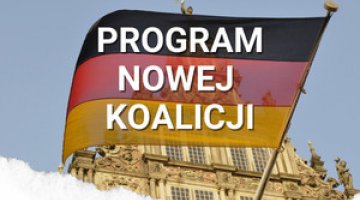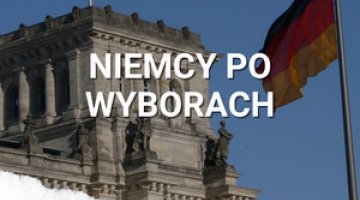Germany updates its hydrogen strategy
On 26 July, the German government amended the National Hydrogen Strategy (German: Nationale Wasserstoffstrategie) which defines the main trends, assumptions and instruments supporting the policy for the development of a hydrogen economy in Germany. The original version of the document published in 2020 envisaged that it would be updated after the first three-year preparatory phase (for more details, see ‘The German hydrogen strategy: green hydrogen in the spotlight’). The amendment is intended to enable the transition to the second stage by laying the foundations for a hydrogen economy.
The updated strategy defines four areas of action along with instruments planned for implementation in the short (2023) and medium term (2024–2026):
- Ensuring the availability of low-carbon hydrogen. The German government estimates that hydrogen consumption in Germany in 2030 will be 95–130 TWh (the first version of the strategy assumed 90–110 TWh). Part of the demand is to be covered by domestic production of green hydrogen; the government’s target for the construction of domestic electrolysers by the end of the decade has been raised from 5 to 10 GW in the updated strategy. Various instruments, including state auctions or subsidies under the EU’s IPCEI (Important Projects of Common European Interest) mechanism, are expected to provide financial and legal incentives for the installation of domestic electrolysers. However, most of the hydrogen used (up to 70%) is to be imported both via the planned gas pipelines from neighbouring countries or the EU’s immediate neighbourhood and by sea from other continents (in the form of ammonia, methanol or synthetic fuels). It has been announced that a hydrogen import strategy will be adopted by the end of this year which will define the main directions and instruments to be used by Germany to enable imports of hydrogen and hydrogen-based products by the end of the decade.
- Construction of hydrogen infrastructure. Berlin assumes that a national core hydrogen network (Kernnetz) with a length of around 1,800 km will be ready by 2032 and will be based mainly on existing gas pipelines. Its main sections are to be built by 2028 using projects as part of the IPCEI programme. There is a plan to connect the key hydrogen production and consumption centres in Germany and to link them to similar networks planned by operators in other EU countries as part of the European Hydrogen Backbone. The amendment of the Energy Industry Act (Energiewirtschaftsgesetz) scheduled for autumn this year and the special act on the development of hydrogen infrastructure (Wasserstoffbeschleunigungsgesetz) are intended to trigger the implementation of the project.
- Promoting the use of hydrogen in specific areas. According to the German strategy, hydrogen should be used first in the sectors of the economy where no other options exist in the decarbonisation process, especially in industry (including the refining, chemical and metallurgy sectors) and heavy transport (mainly in air and ship transport) and in the electricity industry, where it will be largely used as a backup in place of unstable renewable sources. State support instruments are to be concentrated on these sectors. Before it starts investing in hydrogen power plants, Berlin plans to adopt a special strategy (Kraftwerksstrategie) by the end of this year and a financial incentive mechanism, the framework of which reportedly has already been agreed with the European Commission. In the short term, measures such as carbon contracts for difference and IPCEI subsidies will be implemented in industry. The amended strategy clearly states that governmental instruments supporting the use of hydrogen will apply not only to green hydrogen but also to its other low-carbon variants.
- Creating favourable framework conditions for the development of the hydrogen economy. This primarily concerns introducing legal and regulatory changes in Germany to step up the implementation of projects related to the production, transport and use of hydrogen, including by streamlining the permit-granting procedures. Germany also intends to act on the EU and international arena to create uniform standards, in particular for the production and transport of low-carbon hydrogen in order to facilitate the creation of a regional and global market.
Commentary
- The updated version of the German hydrogen strategy confirms its determination to focus on hydrogen technologies as an important element in the process of decarbonising the economy. The German political and business elites are convinced that the use of hydrogen will be an inseparable element of the energy transformation and climate policy, and that the technologies related to it open up an opportunity for the development of German industry. Representatives of German business and political circles believe that Germany can become a global leader in hydrogen technologies thanks to its potential for innovation and its know-how.
- The final version of the amended strategy is the result of months of disputes within the SPD-Greens-FDP government coalition. The main divides run between the Greens and the FDP. For example, the Greens wanted to limit the support instruments to the production and use of green hydrogen, and exclude them in the case of hydrogen produced using natural gas (so-called ‘blue hydrogen’) or with the use of electricity from nuclear power plants. According to them, the potential areas of hydrogen use should be narrowed down to those sectors where there are no other alternatives. In turn, the FDP prefers a ‘technology neutral’ approach, assuming that the market should decide what hydrogen should be used and in which areas. The FDP also opposed Vice-Chancellor Robert Habeck’s original plan to set up a state-owned entity tasked with carrying out hydrogen infrastructure construction projects. The strategy was adopted six months later than planned due to the disputes inside the coalition, leading to annoyance and criticism among German business circles. They fear that a further delay in creating the necessary regulatory framework and appealing instruments of financial support will hold back large-scale investments and thus strip German companies of the chance to secure a convenient position in the global hydrogen race.
- The amended strategy shows that, at least in some places, the German government’s approach to supporting (especially financially) the implementation of hydrogen technologies has become more pragmatic and less ideological. As a result of the compromise, the applicable principle will remain the one that only investments in electrolysers for the production of green hydrogen will be eligible for subsidies for hydrogen production. However, in other areas (imports and use in industry), a more open approach has been adopted towards non-green, low-carbon variants of hydrogen. This change has been made under pressure from the business community, which convinced politicians (especially from the Greens) that limiting support to green hydrogen will significantly delay investments and limit their potential scale.
- The new version of the strategy confirms that domestic production will not be able to satisfy Germany’s demand for hydrogen, and that the country will be permanently dependent on its imports. Berlin is already in advanced talks on building a joint hydrogen infrastructure with countries such as Norway, the Netherlands, Belgium, Denmark and France. Morocco, Algeria, Tunisia, the United Kingdom and Ukraine are seen as potential sources of imports via gas pipelines in the EU's neighbourhood. In other continents, Australia, Saudi Arabia, the United Arab Emirates, South Africa, Namibia and Chile are among the potential exporters with which Berlin is planning joint projects. Since Germany has been forced to become energy independent from Russia due to the invasion of Ukraine, possible future imports of hydrogen from Russia are no longer on the current agenda. However, it should be assumed that the possible normalisation of political relations in the future will also create room for discussion on joint German-Russian hydrogen projects. Supporters of the Nord Stream gas pipeline may also use this option in the debate over the repair of the Nord Stream gas pipeline.




